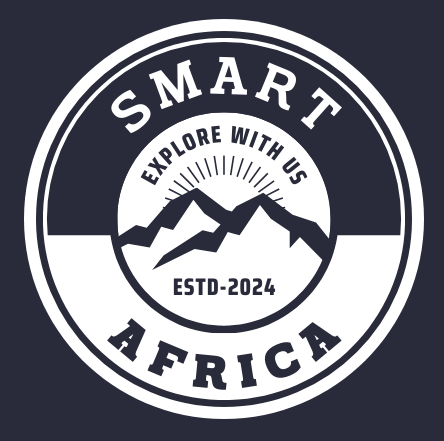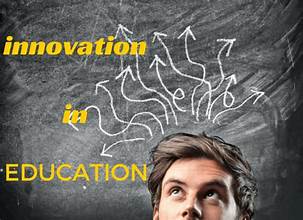Innovation and challenges are the web one has to tread on in the journey towards excellence in education. Standing today at the threshold of an entirely new era, at a time when technology advancement and shifting needs of society are rewriting educational paradigms, reshapes the very essence of learning.
Embracing Technological Advancements
Tech has become the cornerstone of modern-day education. It changed the way knowledge was accessed, shared, and applied. From virtual classrooms crossing geographical boundaries to interactive learning platforms giving personalized study experience, the digital age has unprecedented opportunities for students and educators alike. Artificial intelligence and machine learning were changing the way we assess the outcome of learning and personalise the educational experiences so that none of the learners get left behind.
In just the past two years alone, technology in learning has grown from useful to core enabler of differentiated instruction. Khan Academy, Coursera, and others offer extensive libraries of courses at every user’s fingertips, democratizing education across borders. This type of access is most important in unserved communities and developing countries where conventional educational resources are few and far between.
It opens new frontiers into experiential learning bred with Virtual Reality, Augmented Reality, and other technologies. Currently, it allows a student to walk through ancient civilizations, get a closer view of the internal anatomy of organisms, or simulate complex projects of engineering from his classroom. Such experiences not only increase engagement but deepen understanding through provision for a concrete context in which to learn.
Cultural and Socio-Economic Diversity
Classrooms are becoming variable in a highly globalized world, thus creating a tapestry of cultures, languages, and socio-economic backgrounds. The exploitation of such diversity contributes to many learning experiences but is also an instrument to empower students toward success within multicultural contexts. The ventures these days bring a lot of new challenges with respect to providing fair access to quality education and bridging the existing digital gap in many communities.
This means that education, therefore, requires culturally responsive teaching practices. In other words, it provides an avenue for infusing multiple perspectives into the curriculum in a way that is most likely to make people understand and associate themselves with others with whom they may not share a certain aspect of culture. In this regard, an integrated approach would not only make the environment inclusive but also empower learners to appreciate the richness ensuing from global perspectives in today’s modern interdependent world.
Furthermore, socio-economic inequalities are still too much for many students to access education. This has become a significant obstacle in the urban and rural part due to unequal opportunities to accessing modern technologies and access to the Internet. Connecting to digital tools can bridge these inequalities through the creation of opportunities—within community Wi-Fi networks or subsidized devices—to afford them or such like.
Adapting to Changing Needs
When industries evolve and new ones pop up, education will have to keep refreshing itself in providing relevant knowledge and skills for learners in the future. Cautiously traditional initially, STEM has recently won enormous speed—floodgates opening to a great variety of careers in fields as diverse as robotics, biotechnology, and renewable energy. It is at the very exact period when soft skills that are needed to thrive in an increasingly complex world have been realized—critical thinking, collaboration, and adaptability.
It cannot be accepted that STEM disciplines integrate into the curriculum aimed at teaching some jobs to the students, but to infuse the spirit of innovation and problem-solving. The pedagogical approach that gave ground to project-based learning, whereby learners get involved in solving real-life problems and allow for application of knowledge in practical life, was what gained ground. Practical activities in a teamwork setting like this foster very important skills, such as resilience and teamwork, in today’s competitive job market.
Moreover, with put-in-place technologies, the rapidly changing world dictates constant innovation, which requires skillful swiftness in all aspects of curriculum development and education. Professional development programmes in empowering the educators person-to-person in integrating new technologies and pedagogical strategies into teaching practice remain central to ensuring learners receive relevant and future-ready education. In short, the investing in the continuous growth and professional development of teachers in this developmental institution will promote a culture of lifelong learning for both the educator and the learners.
Challenges on the Horizon
The opportunities are huge, but looming in front of us are challenges. If technology is going to change at this rate, then curriculum development and teacher training can’t catch up, leaving gaps in preparedness. Many students still have to sort out problems related to access and affordability, mostly in unserved and underserved communities. This swing towards digital learning has brought before us concerns over too much screen time and its effects on the well-being of students.
Quality education eludes all in the world. The socioeconomic chasms characteristic of large parts of the world have limited upward mobility in education and have basically reinstated cycles of inequality. Keeping this in mind, it becomes incumbent upon the governments and their institutions to have in place policies and programs that would at least try to help bridge such gaps by funding programs for underfunded schools or increasing access to digital resources and infrastructure.
On top of this, it also includes critical issues of data privacy and security as well as digital literacy. The teachers and other policymakers have to strive through these thorny issues so that students may be able to engage self-eously in this digital space. Schools also provide learners with skills to make informed decisions related to protecting their privacy in an increasingly digitized society.
The Role of Educators and Policy Makers
Obviously, under the impact of these huge waves, educators and policymakers more than ever need to be at the forefront in framing the future of education. With a culture of innovation and lifelong learning and embracing inclusive policies, thereby every student grows to their full potential. Academic–industry–government collaborations will be needed to truly effect meaningful changes that equip the next generation of global citizenry.
Teachers are not merely providers of knowledge but also guides and role models to incite students in discovering their interests and working on problems to achieve them. Through the development of creativity, critical thinking, and curiosity, a teacher can light up a lifelong passion for learning, thereby arming the student with the required virtuousness to succeed in an increasingly complex and interdependent world.
On the flip side, policy makers themselves can change this very system into one of improved equity, accessibility, and excellence in education. An enabling environment—in which all innovate and all students succeed—has investment in an educational infrastructure, support for professional development of educators, emphasis on evidence-based practices with dedication by policymakers.
Look to the Future

Even as the winds of change blow and the way ahead does seem a bit uncertain, one thing stands out unmistakably: the quest for excellence goes on. We have the basic fabric from which we can fashion a new path to greatness through technology, celebrating our diversity, and responsiveness to the changing needs. Together, we have the ability to unlock unlimited potential residing in every learner so that a world with education not only as a means to success but it’s athallmark of the survival of society comes to life.
A promising future of education: be agile, inclusive, and progressive, so each learner may have wherewithal to grow in an ever-developing world. This will happen only if, together, a future is formed where education would not just empower people but also enable communities to grow and planetary sustainable development take its course.
After all, education deals not only with knowledge but also with curiosity, resilience, reshaping, and powers within people to will their destinies. Therefore, the challenges and opportunities that face us now at this crossroads—the juncture between innovation and tradition—are what we have to embrace wholeheartedly, realizing that this strive towards excellence in education is something worth rendering to at every count with commitment and determination

